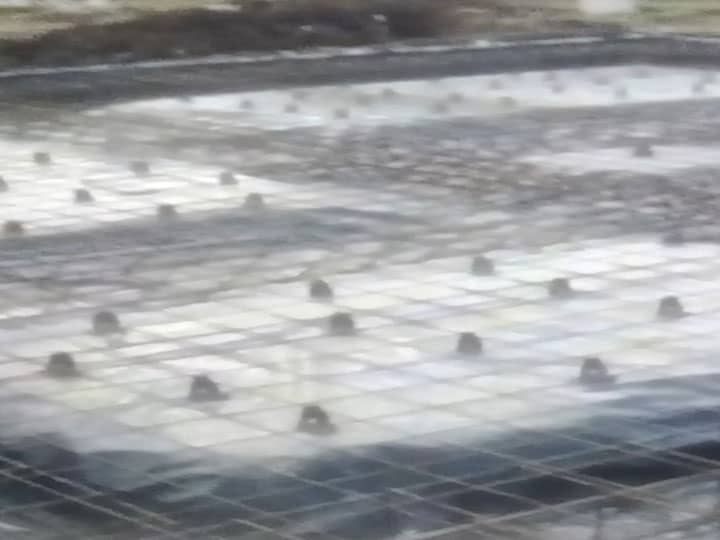
Timber Piles in Raft Foundation
Author & Reviewer: Jewel Cameron
Date: October 2020, Volume 1
Piling construction remains one of the most effective methods of providing maximum strength for structures. One of the best qualityspecies timber for building and civil engineer structures especially for foundation is known as green heart.
Greenheart which can found in Guyana and other countries in South America.
A pile foundation relies on strong surfaces, usually piles to be driven down to low depths, reaching either densely compacted soil or not, capable of withstanding the structure's anticipated weight and to a layer as much of rock. The traditional pile is made of timber and this material still remains an excellent choice for pile foundations today.
Greenheart Timber Pile and its Characteristic
Greenheart is an evergreen plant that grows to about fifteen to thirty (15-30) metres tall, although other species can reach heights of up to forty (40) metres. The diameter of its trunk is an average thirty-five to sixty (35-60)centimetres, with some rare species being around one hundred (100). Greenheart trees have oval or irregular small, heavy crowns. Its leaves have smooth edges and are arranged opposite each other. The fruits of greenheart trees are drupes, each of which contains a seed.
Wood Appearance
Light greenish, yellow to dark olive, sometimes marked with brown or black streaks.
Sapwood
Pale yellow in colour, shading gradually into the heartwood
Texture
Fine and even
Grain
Straight or interlocked
Bole
Has 50-80 feet long, cylindrical, diameter 20-25 inches
Physical and Mechanical Properties
Has exceptionally high strength properties, when weightedis 1030 kg/m3 (64 lb/ft3) seasoned
Bending Strength
It has 181 N/mm2 (26200 lbs./in2)
Modulus of elasticity
It has 2100 N/mm2 (304000 lbs./in2)
Compression parallel to grain
Has 89.9 N/mm2 (3040 lbs./in2)
Shock resistance
It has very high shock resistance, excellent crushing strength and a high density.
Natural Durability
Almost immune to decay and termites, highly resistant to marine organisms and fire. Extremely resistant to preservative treatment.
Drying
Dries very slowly with minor degrade, particularly in the thicker sizes. Distortion is not serious, but checking and splitting may occur.
Working
Easily sawn, in spite of a slight bunting effect, turns well. Planning is not difficult despite the high density of the wood and interlocked grain
Assembly
Easy gluing, pre-boring is recommended for nails and screws. Good nail holding.
Finishing
Paint and Stain when required is satisfactory.
Uses
A very heavy, hard timber, suitable for use under exacting conditions, outstanding in most of its strength properties and of very high durability and having excellent resistance to attack by marine borers.
Available in very large sizes and long lengths, and is therefore suitable for piling, piers, lock gates, docks,jetties, harbor work. Useful for pier decking and hand rails, flooring and in the buildings and civil engineering industry, bearers for engines. Gives good services in chemical plants for vats, filter press plates and frames. Suitable for joinery in both exterior and interior situations and useful also for fishing rods and as a center laminar for longbows and general construction.
Pile construction methods is important fortwo main reasons, either the surface substrate of the construction site is weak, or the structure being built on will be exceptionally heavy. Weak substrate, most often loose dirt and sand, obviously should not have a foundation built directly upon it. Even a fairly stable surface may still not be suitable for high-rise buildings, water supply project, bridges and similar heavy buildings and civil engineering construction with concentrated loads.
When it comes to construction it isn't always the stronger, more rigid material that is preferred. Materials that have a slight flex to them perform better under rigid conditions, as they can give slightly rather than becoming brittle against the pressure. Timber piles have the ideal amount of pliability in them. When placed in the ground, timber piles will allow the surrounding soil to adhere to them, which improves strength without sacrificing structural integrity. Steel and concrete pilesis not as flex- able in the soil like timber. Timber pile are quite suited to handle lateral ground force.

PGDCM PGDSM PGCPM MQSI SACD
Construction- Quantity Surveyor- Valuer/ Appraiser. Project Management
37 PattensenTurkeyen, Dennis Street, Georgetown, Guyana
Email. Jewelccameron55@yahoo.com